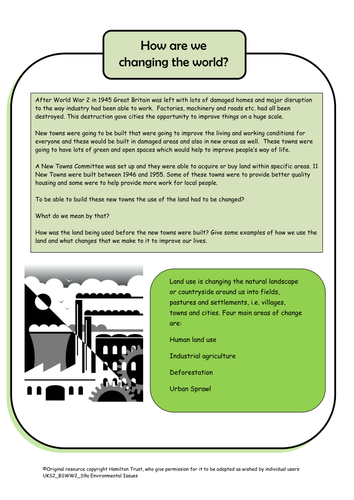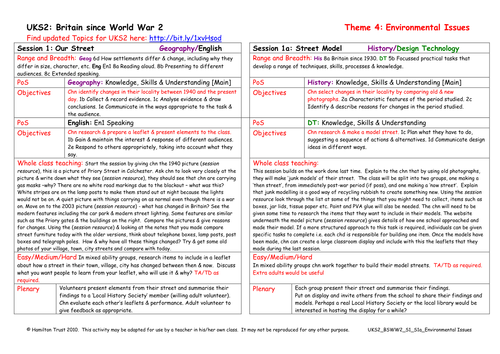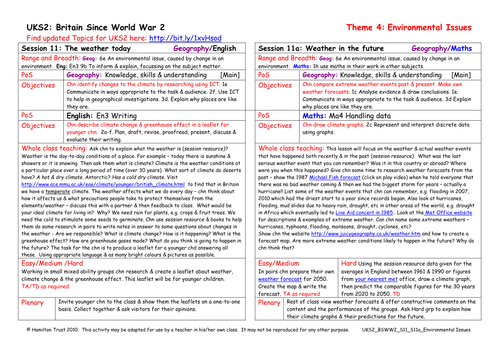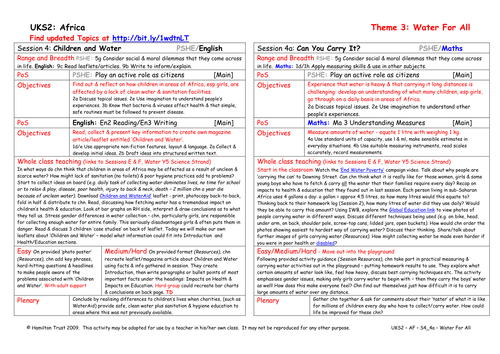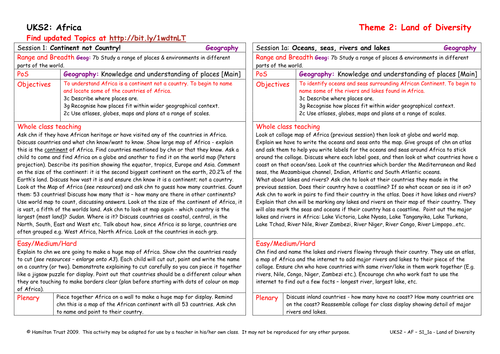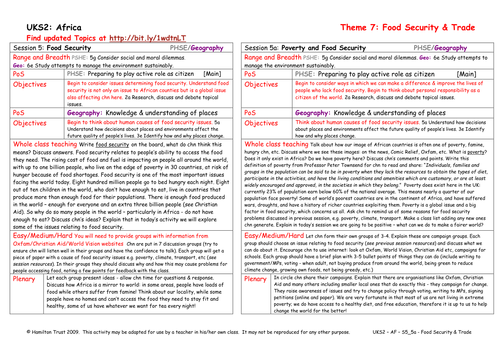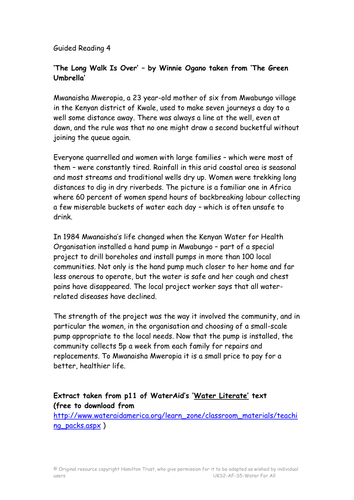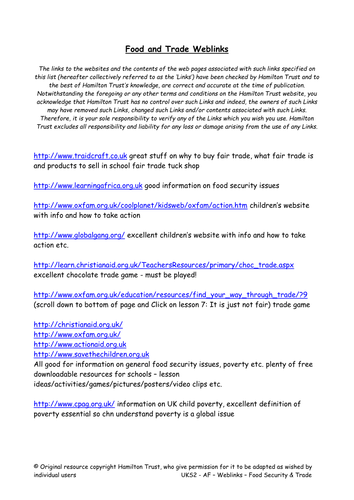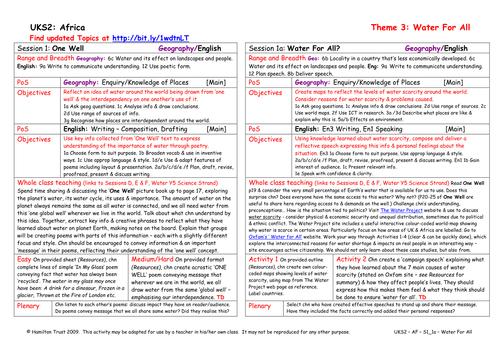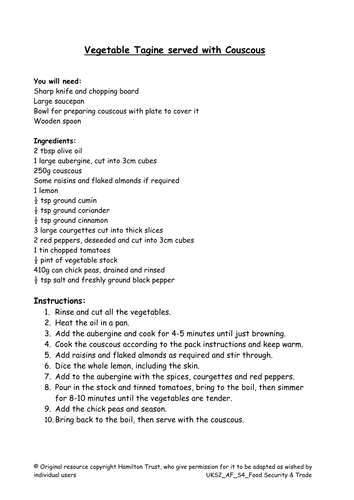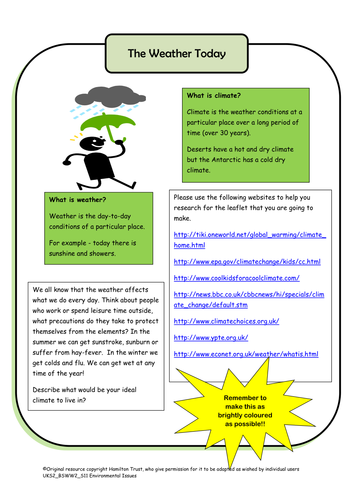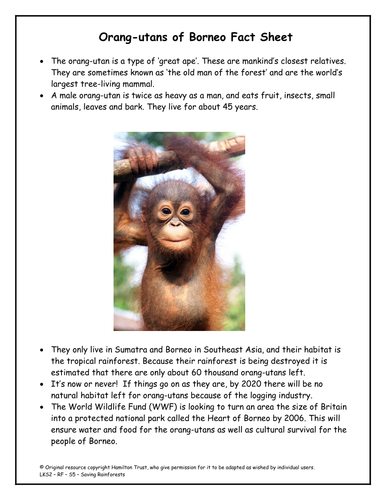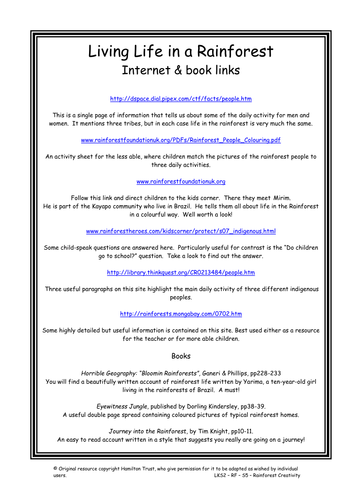
397Uploads
10014k+Views
11624k+Downloads
Geography

Effects of Human Land Use
Children read the description of a fictional tourist town, they consider the way the town is dependent upon the tourist industry that surrounds the Coral Lake.
A proposed new bylaw aims to change things – what effects will this have? Children hold a town meeting.

Erosion
Children consider the different types of erosion, water, wind, glacial, sea and soil.
In groups each with a different type of erosion children research for information and then draw cartoon strips explaining how the types of erosion occur.

How Are We Changing The World?
Children consider ways in which we use the land and how it has changed since WW2. The four main ways are human land use, industrial agriculture, deforestation and urban sprawl.
Children help decide the future of the imaginary Grousebrook Valley in the Peak District NP.

Our Street
Children look at streets around the school, houses, shops and street furniture. Compare today with the 1940s. Use old photos of home town/village or city as resources. Children produce a leaflet showing how their street has changed between then and now.

Weather In The Future
Discuss extreme weather events from present and past. Using data they have been given about England’s weather over the past 30 years, some children draw a climate graph and predict what will happen in the future. Other children create a weather forecast for 2050.

We Are Britain KS2
Read some poems from We are Britain by Benjamin Zephaniah and ask what these children have in common. Discover where in the world children in the class came from originally – locally, elsewhere in Britain, another country? Write poetry about each other in BZ style.

Children and Water
Using an informative and clear leaflet downloaded from WaterAid, children read and discuss how children in parts of Africa are affected by lack of clean water and sanitation. Facts are collected before creating own posters and leaflets entitled ‘Children and Water’.
Suitable for years 5 and 6.

Continent Not Country!
Children look closely at the continent of Africa. They recognise that it is a huge and diverse land with many different countries and widely varying landscapes and climates. They take 1/2 countries each and create a huge collage-map of Africa.
Suitable for years 5 and 6.

Food Security
Children begin to consider issues determining food security. This session helps them to understand that food security is not only an issue for African counties but is a global issue also affecting us here. Children work in groups to discuss different causes.

Meet Amina In Malawi
Dramatic changes to people’s lives occur when access to clean, safe water and latrine facilities are brought to a community. Children discuss ‘The Long Walk Is Over’ and read Amina’s story. They make ‘before and ‘after’ diary entries for her, expressing this change.
Suitable for years 5 and 6.

Food Crops and Fufu
Children are introduced to the idea that there are some staple foods which exist in all cultures. These are usually carbohydrates, and in many African countries they consist of foods made from Maize or corn. Children make fufu.

No Magic Tap
Find out about children’s experience of water all around the world using Oxfam’s Our World Of Water and compare with life in the UK. In a similar style to the book, children create a ‘scrapbook’ page comparing their lives with Khadija or Gamuchu from Africa.
Suitable for years 5 and 6.

One Well
Imagine that all the water on Earth came from one well! Children learn that the amount of water on our planet never changes and that we are all connected by the way we draw water from the same source. Children then convey this understanding through poetry.
Suitable for years 5 and 6.

Terrific Tagine
Children return to the notion of a staple food. They look at uncooked couscous grain and discuss how this grain is a staple of much of North Africa and Middle East. Then children cook vegetable Tagine and enjoy eating it!

The Weather Today
Children learn the differences between weather and climate. Are we the cause of changes in the weather? What might we have done to make this happen? Children are given some websites to research and the activity is to produce a leaflet for younger children to explain this.

Britain
What do we mean by Britain? Establish which countries make up the United Kingdom, Great Britain and the British Isles. Discuss again the different peoples who make Britain what it is today. Children make jigsaw of British Isles showing different peoples.

Mountains to Seas
Using an exciting presentation, children look at a variety of images from across Africa, the largest landmass on the planet. They begin a research project to find out more about a particular type of landscape, possibly linking this to their chosen country.
Suitable for years 5 and 6.

Endangered orang-utans (1)
Using the internet and fact sheets children find out more about the Orang-utans and why they have become endangered. What is being done to protect them and their habitats? What else can be done?

Make a Map
Children learn all about Britain and the different countries that make it complete. They write simple labels and create their own personal map of Britain, positioning favourite places and familiar landmarks.
Suitable for Years 1 and 2.

Living Life In The Rainforest
The Rainforests are home to some 1.5 million people worldwide. But what is life for them really like? Chn take a close look in this session as they delve deeper into the forests and find out about life in the Jungle using books and ICT.



